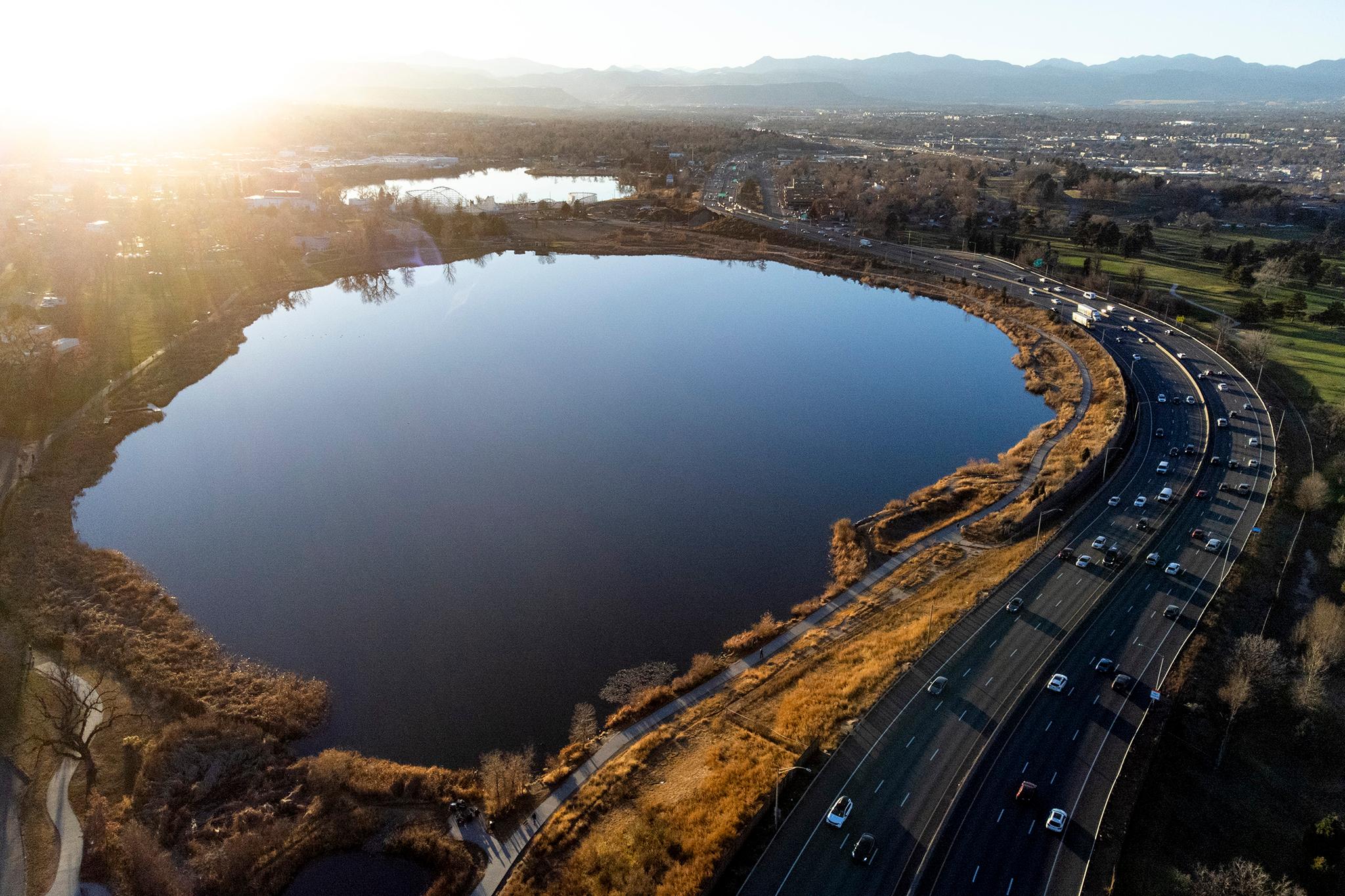This article is a part of Denverite's Street Week: Tennyson series. We're exploring the area by way of the history, people, carp-filled lakes and weird houses that define it. Read more Tennyson stories here.

On a November afternoon, Jason Brooks Arbugh and Robert Fields sit 20 feet apart on the grassy shore of Berkeley Lake, waiting for fish to bite.
The friends travel from their Lakewood senior center to this quiet spot a few times a week, and as long as it's not snowing, they relax and cast their lines.
Across the water, the interstate rumbles, severing Berkeley Park from the Willis Case Golf Course. The mountains watch Denver from a distance. Nearby, kids play on a playground and a few people knock around a tennis ball, while Tennyson Street moms with babies strapped to their chests, circle the lake.
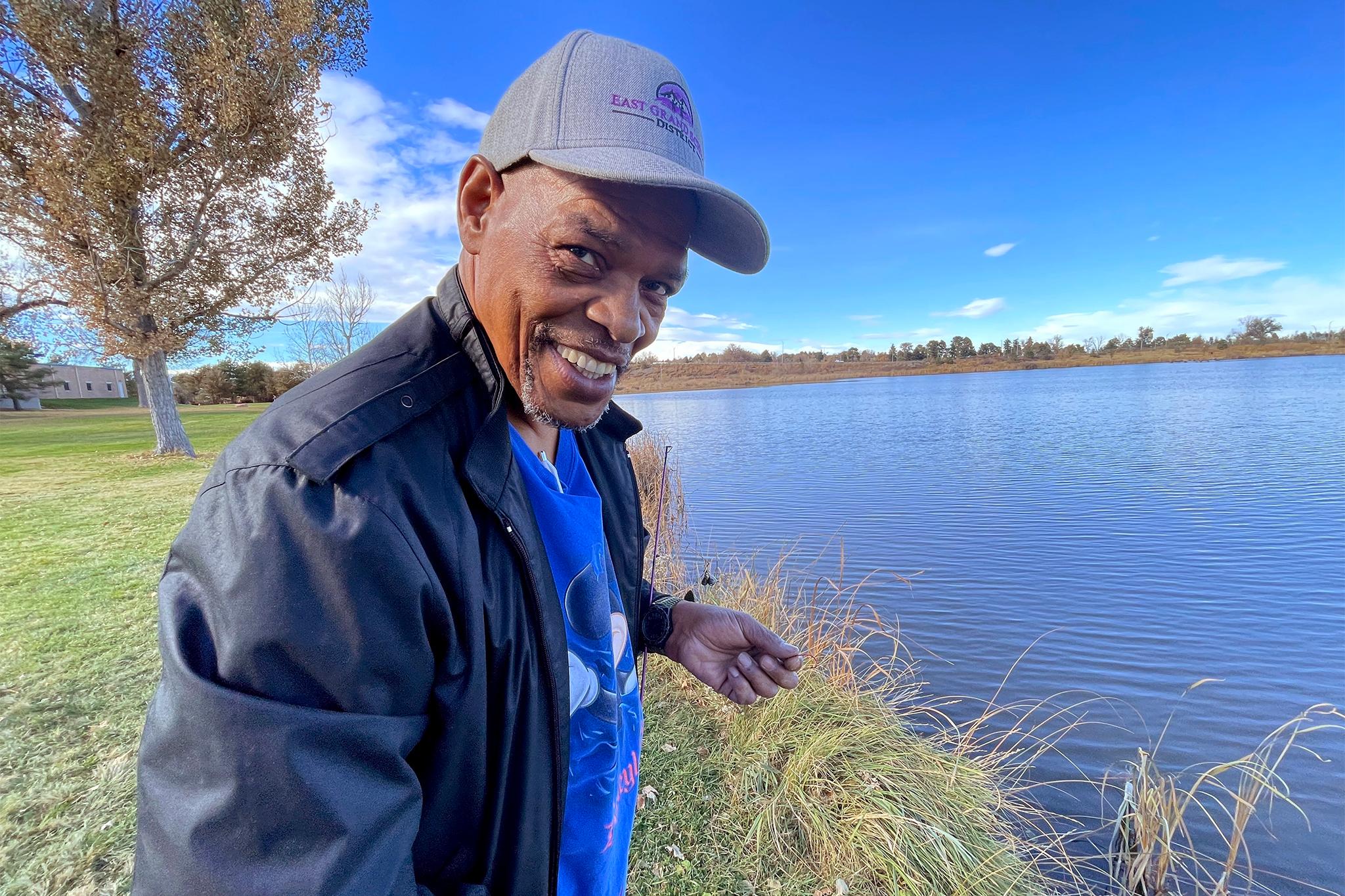
Fields, wearing a Mickey Mouse Disneyland shirt and a East Grand School District hat, smiles, looking at the lake, waiting for a bite that isn't coming.
Arbugh -- bundled in his bright orange Broncos hoodie, an Iraqi Freedom Veteran's hat and blue jeans -- smokes a cigarette, drinks a Coors Light and listens to country radio.
On his arm is a Navy Seal Trident, better known as the Budweiser, worn by those who completed the Basic Underwater Demolition/Seals training.
He looks out at his slack fishing line, looks up and asks: "Did my pole hit?" The fishing line's still slack. "I don't think so."

Denverites like Arbugh and Fields have been casting their lines into Berkeley Lake since it first made headlines in the late 1800s.
John Brisben Walker, who spent stints in the U.S. military, the Chinese Army, and as an iron industry magnate turned newspaper editor after the iron industry went bust, bought the land out of foreclosure to prove that the arid high plains desert could be irrigated and used for agriculture, according to his New York Times obituary.
He began growing alfalfa to prove his theory. It worked.
Around the lake, he ran a racetrack for horses, and he met a demand nobody else had in Denver: He showcased bloodstock -- horses, cows and the like -- for potential buyers.
But ultimately, like so many area landowners, he knew his greatest profit would be found in developing suburbs.
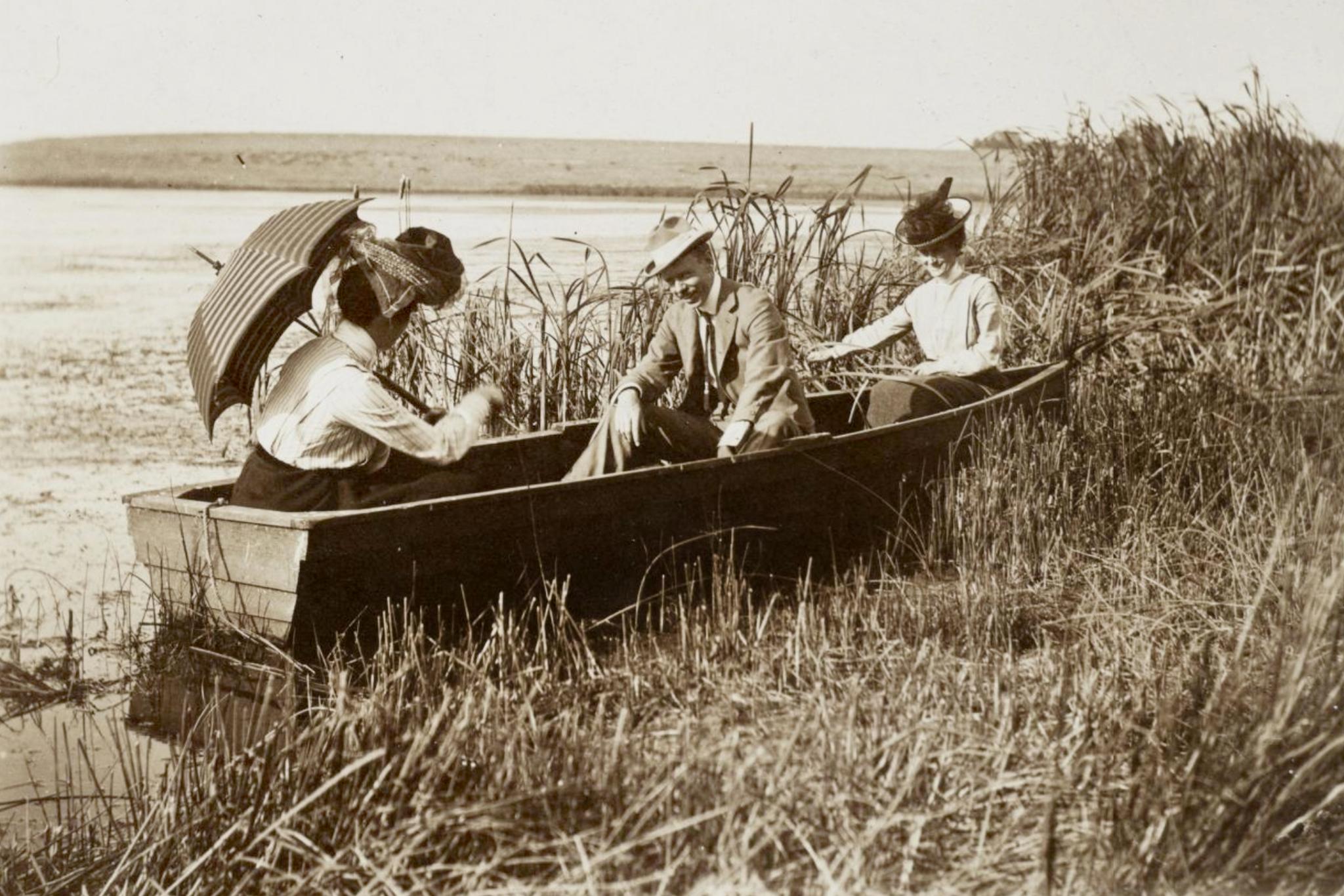
Denver needed growth around it -- and a breath of fresh air.
Downtown had risen in the ashes of the genocide and displacement of the Arapahoe and Cheyenne with fire-and-flood-prone cramped apartments for the poor, monumental mansions for the rich and tents for unlucky flops of the gold rush who camped, homeless, along the city's unimpressive creeks -- unimpressive until they flooded, and people drowned.
As Denver settled into the sediment of the riverbanks and high plains desert, in the 1880s, residents were bored and longing for something -- anything -- to do.
There weren't any parks. There weren't any playgrounds. There were hardly any churches.
So people drank and smoked opium, fought, had affairs, shot or drowned themselves and murdered each other. Others prayed or simply suffered long work days. And a few entrepreneurial types dreamed up what they called the Queen City of the Plains.
Meanwhile, that Queen -- suffering from industrial indigestion -- farted arsenic and lead from gold and precious metal smelters -- thick, sooty gas choking both the people trying to find something monumental from mining industry earnings and those who actually did the work.
Cramped, hacking and desperate for nature, early Denverites looked toward Walker's alfalfa farm with a lake and found something beautiful enough -- and well-branded by East Coast developers as an elixir of life, a world-class destination that rivaled Italy's fourth biggest lake, Lake Como -- where they could catch their breath, cast a line, row a boat, enjoy a picnic and build a house with a large lawn.
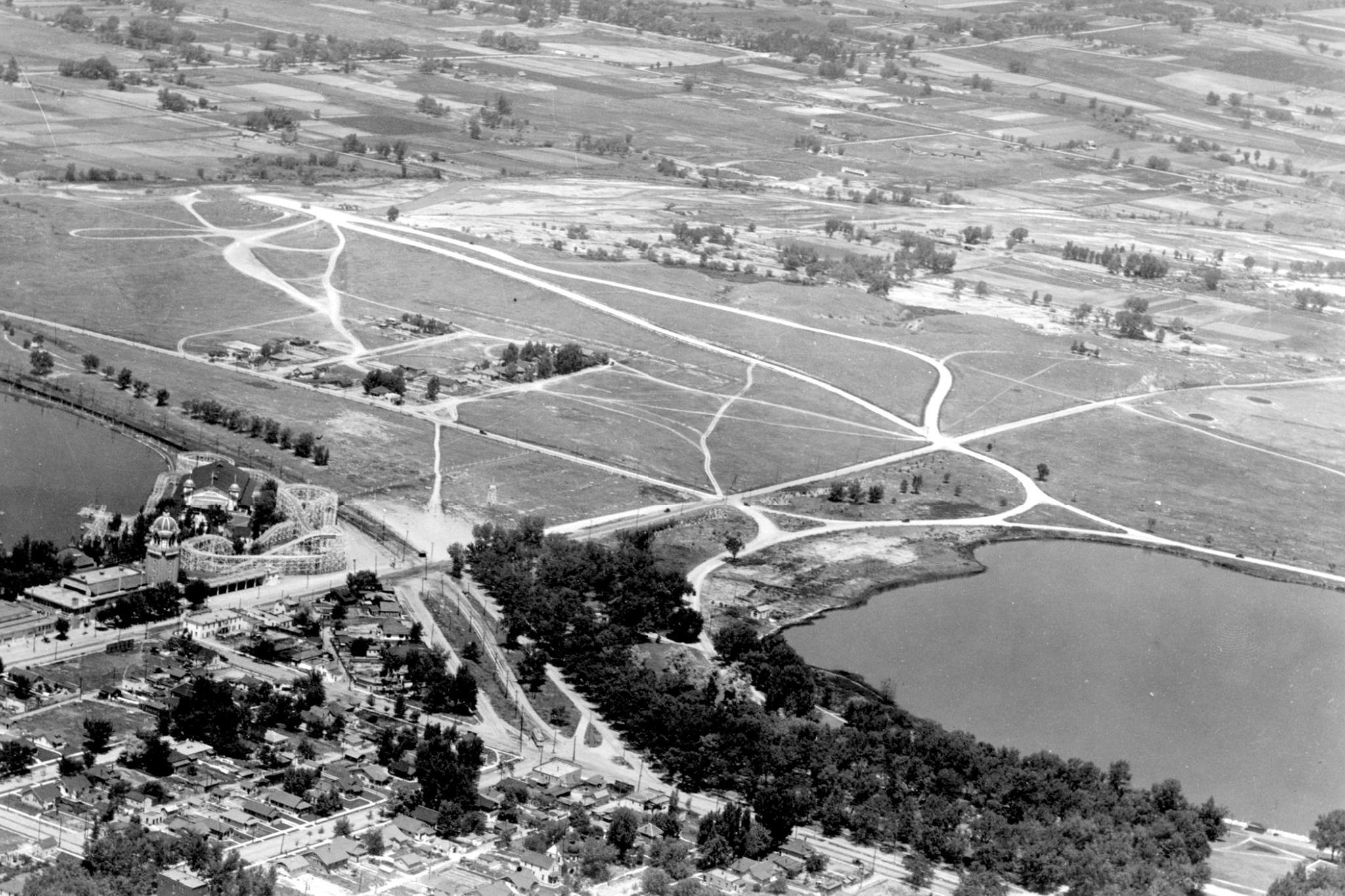
In 1888, just after the Jesuits founded a college near the lake, Berkeley Park Rapid Transit Company decided to run cable cars to the pastoral land, paving the way for suburban development in Northwest Denver.
For $125, an individual could buy a lot from the company Ellis, McDonough & Co., a "firm composed of live, energetic progressive men," the Rocky Mountain News reported. If speculators wanted to purchase an entire block, they could do so for $100 a lot. New homes had to be "pretty" and could cost no less than $1,000 to build.
A "syndicate of Eastern capitalists" created a resort at Berkeley Lake -- just the thing to lure people to buy in the area. The lake was celebrated for "good fishing." There would be a large hotel built above it. Trees would be planted on the banks. A pebble-lined beach would be created, and boats would be available to people looking for a row.
Ellis, McDonough & Co. sold lots with choice lines like: "Why is buying lots in Berkeley like making love to a widow: 1. Because you cannot do it too much. Lots only $175 each and rapid transit is now under way; five-cent fare on the cable road to Berkeley Lake."
The value of the land rose fast, as "gangs of men" worked on the rail line and "jubilant" property holders clung to their investments as demand increased.
But by June of 1889, the charm of the Lake Como of the West had worn off to the sober critics at the Rocky Mountain News. In a lamenting editorial on the desperation of staying entertained on a Sunday, they described it as "a diminutive stretch of water, very diminutive indeed," going on to say, "Berkeley Lake is popular, not because it deserves it but because there is nothing better."
Even so, investors invested.
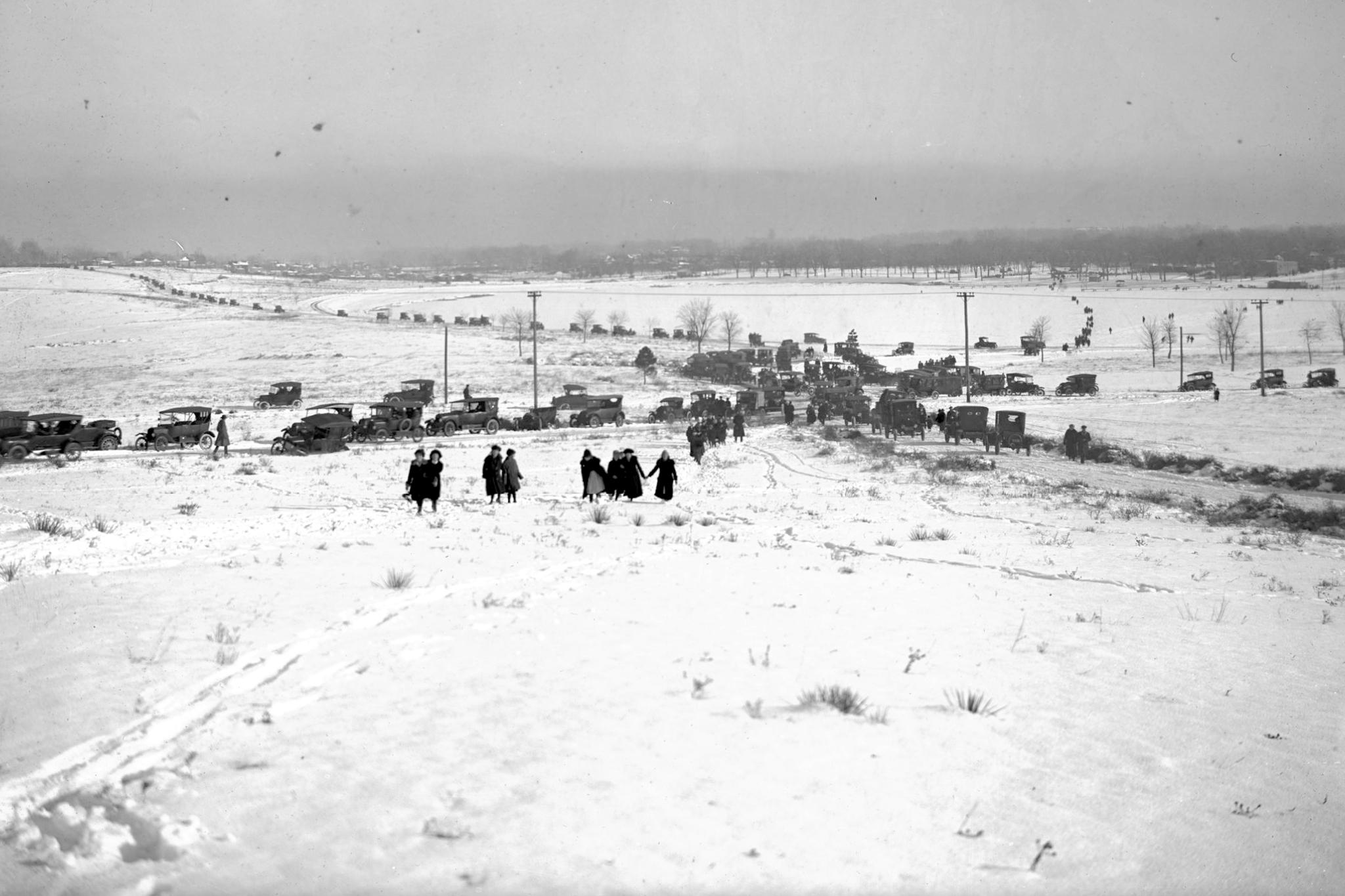
John Elitch, the founder of Elitch Gardens, bought a steam yacht and dainty row boats and bicycle boats from Chicago, parading them around town when they arrived, and eventually launching them in tiny Berkeley Lake.
New proprietors promoted big-band concerts on floating pavilions. Elephants and camels raced the circumference of the lake. Balloonists -- the most popular athletes of the day -- rose above the lake. Trapshooters and hunters formed the Berkeley Lake Gun Club, where people could shoot for sport.
There were cockfights and boxing matches. Tens of thousands of people flocked to the lake for Independence Day celebrations.
Groups like the Nobles of the Mystic Shrine, the Ladies of St. Agnes Guild, the Knights of Pythias and other Knights of the Golden Eagle, the Young Women's Christian Temperance Union, and the Italian order of "Campestre" threw picnics and galas.
Some family-friendly gatherings offered lemonade and all manner of ice creams and sodas. Others were boozy affairs -- until the temperance movement turned Berkeley into a booze-free zone and police started handcuffing the operators of the lake resort who dared to sell beer.
Sobriety became such a virtue in the area that Rev. Tom Uzzell even turned the hotel at the lake into a treatment facility for morphine and alcohol addiction: the Denver Bi-chloride of Gold Institute.
Gun clubs would have shoot-offs, gunning down Peoria blackbirds, ducks and pigeons.
The Berkeley Gun Club, counting among its members bigwigs at City Hall, eventually shut out Berkeley residents from participating, arguing locals had an unfair advantage: They could get to the lake earlier than the city's elites and gun down the choicest birds.
Fishing was an even more popular sport than hunting at the lake though. Fish were so abundant that at one veteran's picnic, people could order a fish dinner, and it would be caught on the spot.
But managing the population proved to be a problem.
Carp overpopulated Berkeley Lake so heavily that boaters complained it was no longer enjoyable to be on the water.
At one point, Elitch offered fishermen three cents a pound to catch as many as they could. When the fishermen refused for the price, he purchased a 1,000-foot-long net and dragged the carp out of the lake, selling them on market. He planned to replace them with bass.
And carp weren't the worst thing reported to be living in the lake.
A strange item in the Rocky Mountain News noted: "It is not to be wondered at that people living along the coast see great monsters in the ocean occasionally, but when they get to seeing sea serpents in Berkeley lake, 2,000 miles from ocean water, it is high time the tasting committee look around for the new and strange brand of fish bait that evidently has been smuggled into Denver from Coney Island."
The private management of Berkeley Lake proved to be as troublesome as the carp and sea monsters.
Managers squabbled and sued each other. Their interest in upkeep of the property waxed and waned. And soon residents of the Northside wanted the city to take over and create a public park.
Under Mayor Robert Speer, architect of the City Beautiful movement, the city purchased that lake for $60,000, along with nearby Rocky Mountain Lake and Sloan's Lake. He turned the land into a public park, eventually bringing in a sandy beach for bathers.
The goal was to give the Northside a park that could rival City Park. Back then, the Berkeley land stretched for acres, without the rude interruption of I-70, giving an unparalleled view of the mountains and an outdoors experience a quick ride from Downtown.
But the greatest pleasure of Berkeley Park was the lake.
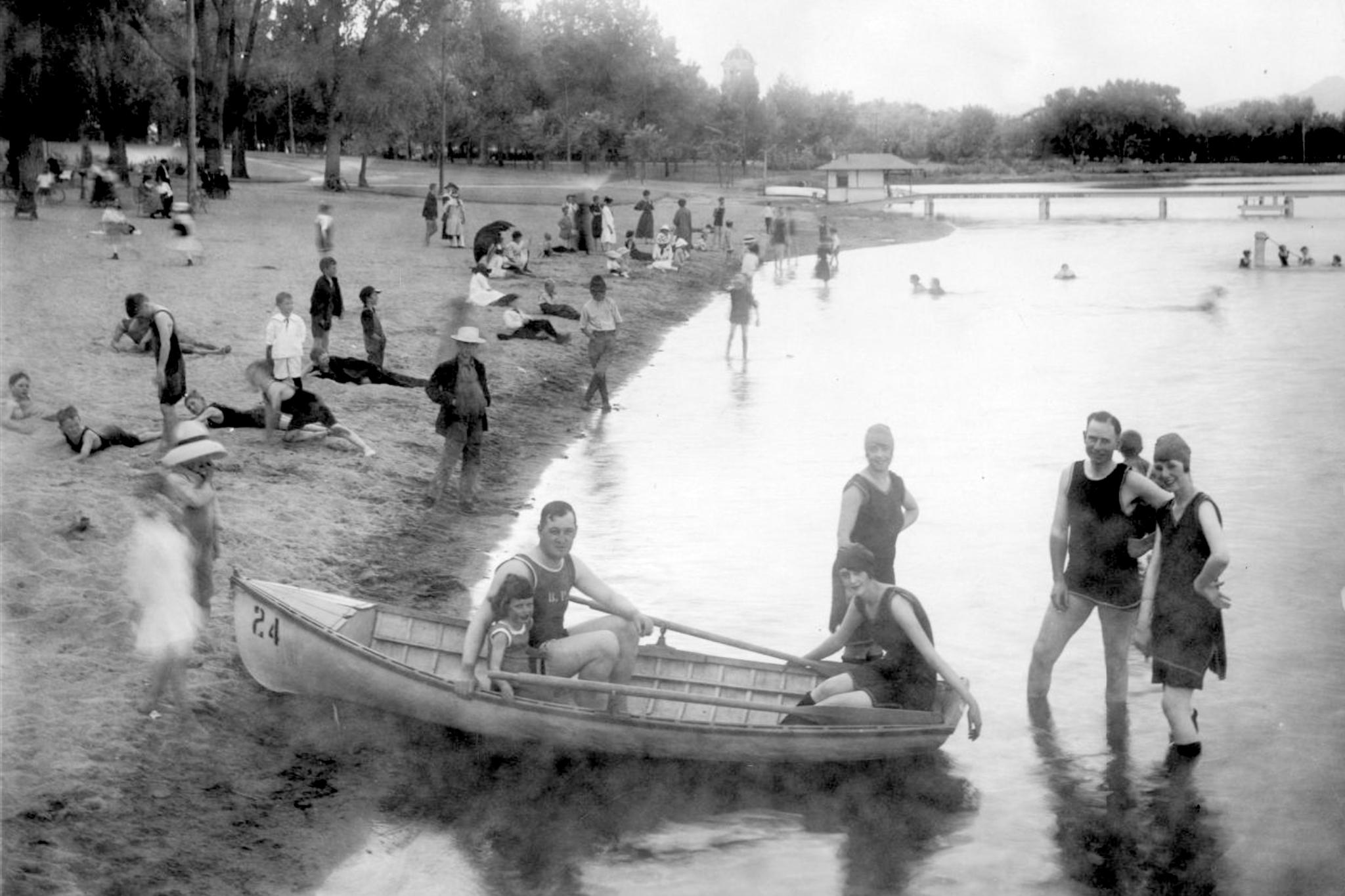
Not long after the city created its park, swimming took off as the hottest fad of the era. Peeling and blistered lobster skin was en vogue. The sport's popularity grew so intensely that local clothiers were overwhelmed by the demand in swimsuits.
An entire new industry, lifeguards, then dubbed life savers, took off. They gave swimming lessons and workshops on how to bring back a drowning person on the banks every night and rescued poor swimmers by day.
For many years, the Rocky Mountain News threw an annual water carnival, lionizing local lifeguards and swimmers like Homer Crosby, Shrimp Wilson, Mack Stanley and Ed Gero, a heavy-smoking, firm-jawed hunk who rescued nearly 50 people in one summer alone. Swim lessons would be offered in the morning, and the students would race in the afternoon.
Perhaps the most impressive competitor was swimmer and cowgirl Martha Sarver. She rode her horse 50 miles to compete in the races.
"She arrived in Denver just in time to change her riding togs for a swimming suit," the Rocky Mountain News reported. "And she won first prizes in the woman's 50- and 25-yard events and was second in the woman's division in the number of points."
While the Rocky Mountain News relished the lifeguards' accounts of saving people, the paper took even more delight in reporting the horrifying details of suicides, murders and accidents on the lake.
It was a time of highwaymen and desperados, when nobody died in a 24-bullet gunfight but a cough could kill you. It was a time when a person's suicide -- full name, address, job, health and relationship status -- were detailed in the papers with precision, where the inscription inside the clothes a victim was wearing was fit for print and photos of frozen corpses extricated from the lake would be front-page news, for all eyes to see.
The reporters didn't worry about how news of suicide might be harmful. Few cared how lurid details might affect a victim's family. And gossipy speculation about affairs and financial troubles was all fair game to cover, never mind how salacious and even libelous they were.
And over the decades, the lake took many lives.
There was Ralph Bonebrake, a 17-year-old hunter. He and his friend Paul Schenck shot a rabbit and hawk before Bonebrake gunned down a couple of ducks into the lake. A great swimmer, he stripped down and leapt into the water and swam toward his game. Despite his athleticism, 100 feet from shore, weeds wrapped around him and he drowned.
Ten-year-old Roscoe Hurley, the son of a plumber, went skating on Berkeley Lake. The ice cracked. He fell in. His friends tried to save him, but it was too late, and it took three hours to recover his frozen body.
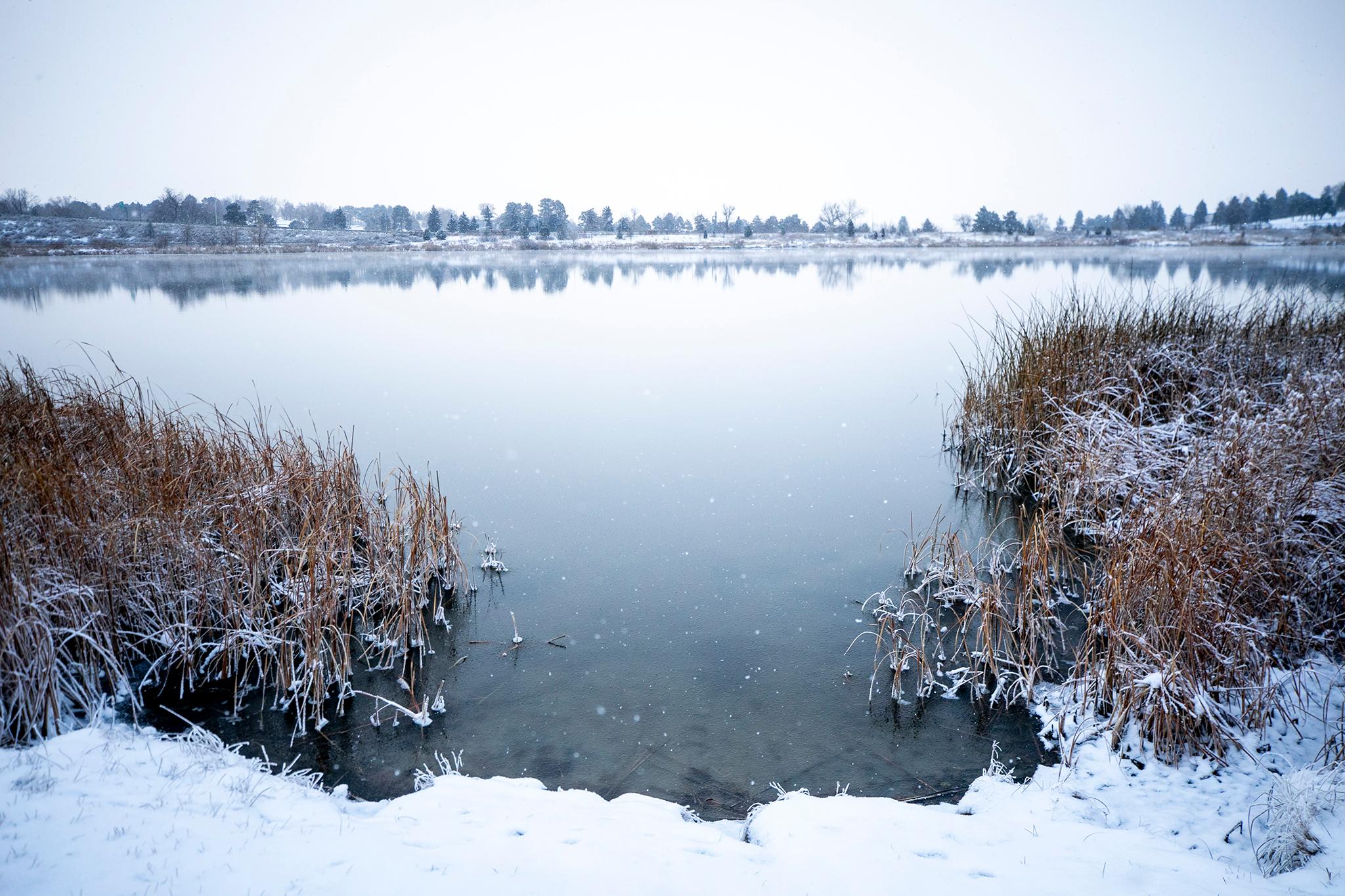
Andrew Holgrene, a Michigan man, checked into a sanatorium in Barnum that he could not afford. He tried to leave, but the staff told him he could not. He escaped and was found by a fisherman at Berkeley Lake, where he had been lying on the shore for three days without food or drinkable water and dying of consumption. He was hospitalized, but it was too late.
Wallace Wallick, a 43-year-old, wandered around the lake looking for a place to jump in and die, but a thin coating of ice stopped him. A police officer found him wandering the shore. Wallick explained he was trying to kill himself: "I'm afraid I'll have to give it up, though, as it doesn't look like there was much chance when the lake is all covered with ice."
Instead of dying, Wallick went to jail.
Then there was the tragic -- and luridly reported -- case of the missing waitress Leonora Zornig and butler John Ryan, who may or may not have been romantically involved.
The two went off skating together at Berkeley Lake and never returned. The Rocky Mountain News offered three possible explanations: "One of these is that they were drowned in the lake; another, that they met with foul play, and the third theory is that they have eloped."
It turned out, they drowned.
A group of young men ice skating spied Zornig's hat in the water. The bodies were found 150 feet from the shore and recovery began.
"The men worked, using the grappling hook to drag the dead girl to the boat," the Rocky Mountain News reported. "When the body was finally laid on the ice, except for the stiffened arms and feet, she looked as if she were sleeping. The cheeks and lips showed the red coloring of health and vigorous exercise. There was no expression of terror in the features and evidently there had been no time for a struggle against death."
The couple, the reporter speculated, had been skating arms intertwined, though Ryan's body was found at the bottom of the lake, 10 feet from Zornig.
A photo of the frozen bodies laid out on the ice graced the front page of the Rocky Mountain News.
"The young people had skated in absolute darkness save for the light of a starlight night," the paper reported. "Whether or not the ice suddenly gave way beneath the weight of the couple as they sped along together, or whether they plunged into an airhole will never be known. Did they cry for help as the icy water closed over them? And did their despairing cry sound out along the shore of the lake, futile, unrecorded, unheeded?"
Not knowing those specifics must have troubled the reporter, who relished every detail: The color of the woman's petticoat was red, her jacket included "tiny gilt buttons" and she wore a white beaver hat decorated with a couple of quills.
It wasn't just the details of death on the lake that made the headlines. Berkeley Lake's odors haunted the public over the years -- and reporters relished noting that, too.
The stench started as early as 1891, when a Professor Tilden came to Denver from the School of Mines to study the phenomenon and sampled the scum on top of the late.
"The microscope reveals an astonishing variety of insect life disporting itself in the liquid which later in the season is said to form the artesian ice of the city," the Rocky Mountain News reported.
Artesian ice from a scummy lake was hardly an elixir of life.
Nearly 15 years later, the city was so confounded by the terrible smell of the lake that an East High School teacher, John B. Garvin, told the health department to put $100 worth of copper sulfate into the water for temporary relief.
Still, the stench wasn't solved.
By 1949, there was a massive die-off of the fish in the lake. Swimming was eventually banned out of concern for people's health.

By the end of the '50s, the glory days of Berkeley Lake were largely over. In the 1960s, planners decided to run I-70 through Berkeley Park.
To do so would split the park in half, separating the lake from the Willis Case Golf Course. Neighbors were horrified and protested, arguing I-70 should be routed around the park. Doing so would raise the budget, and the powers that be ignored the neighbors.
To bring the interstate through, the city had to drain the lake and shrink it.
Prior to the division, the park was one of the city's grandest. After the interstate cut through, Berkeley Lake looked like an afterthought. Recreating the views, buffering the park from the noise of semis and cars, and creating a sense of wonder obliterated by the constant traffic has been a goal of the parks department's planning since.
In 2011, the city drained the lake again for more improvements. Treasure hunters with metal detectors waved them above the mud, looking for lost jewelry from swimmers long ago, the Denver Post reported.
By the time the work was complete, the park -- while smaller and less stunning than it once was -- was once again a peaceful place to spend an afternoon fishing.
Today, with so few fish biting, Fields is ready to cut his regular fishing excursion with Arbugh short and head back to Lakewood.
"Twenty minutes!" he yells, warning Arbugh it's almost time to go.
Fields is a quiet man. The son of an Army soldier, he grew up between Alaska and Colorado.
He fishes to see what he can catch.
"This place is up and down," he says. "Sometimes they're biting like crazy, and some days they're not biting at all."
Frustrated, Fields packs up and walks over to his friend to tell him it's time to head back to the car.
"I've had the same worm on the same hook all day," Arbugh says, ripping the wriggler off the hook and chucking it into the water.
"I've had the same worm, too," said Fields.
Read all the stories from Street Week: Tennyson here. (And dip into the Street Week archives with 2021's Morrison Road and 2020's Bruce Randolph.)

